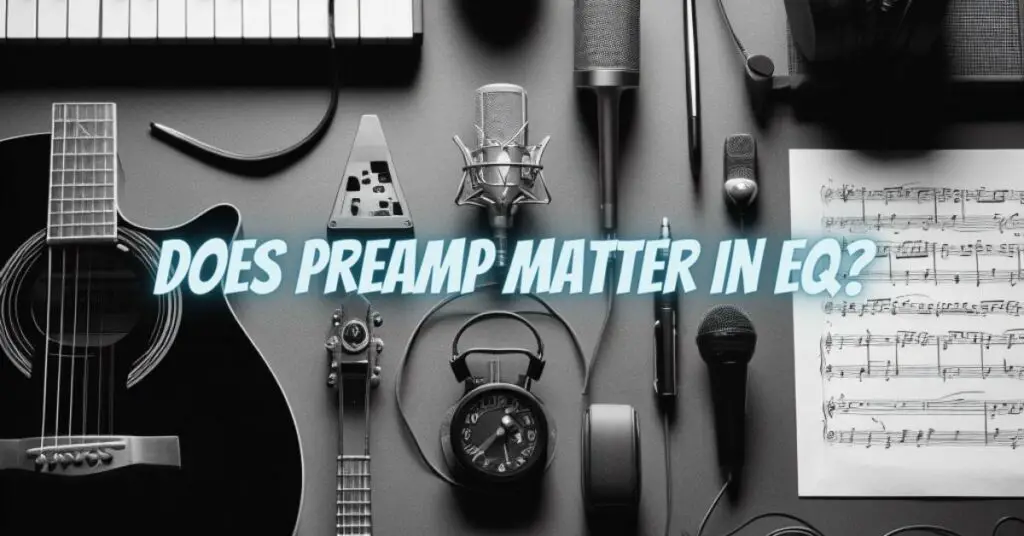In the intricate realm of audio production, the synergy between preamps and equalization (EQ) stands as a critical element in shaping the sonic landscape. The question of whether a preamp matters in EQ is a nuanced exploration that delves into the intricacies of signal path, tonal coloration, and the interplay between these two essential components. This comprehensive article seeks to unravel the significance of preamps in the context of EQ, shedding light on how these elements collaborate to influence the final sonic output in audio production.
- Signal Purity and Integrity: At the heart of the matter lies the role of the preamp in maintaining the purity and integrity of the audio signal. A high-quality preamp, characterized by low noise and minimal distortion, ensures that the original tonal characteristics of the source material remain unaltered. This becomes the foundation upon which subsequent EQ adjustments are made, allowing for precise and transparent shaping of the audio spectrum.
- Coloration and Tonal Character: While transparency is valued in certain applications, many preamps contribute a unique tonal coloration that becomes an integral part of the sonic palette. The sonic signature imparted by a preamp can significantly influence how subsequent EQ adjustments are perceived. Engineers often select preamps that align with the desired tonal character, creating a harmonious blend between the preamp’s coloration and the targeted EQ modifications.
- Impedance Matching and EQ Responsiveness: The interaction between a preamp’s impedance and the impedance of connected audio devices, such as microphones or instruments, can influence the responsiveness of EQ adjustments. A well-matched preamp ensures that the EQ controls effectively shape the frequency response without impedance-related anomalies, facilitating more accurate and predictable tonal adjustments.
- Dynamic Control and EQ Precision: The dynamic capabilities of a preamp, including its ability to handle varying input levels, play a crucial role in the precision of EQ adjustments. An optimal signal level, facilitated by proper preamp gain staging, allows for finer control over the EQ parameters. This ensures that dynamic nuances in the audio source are accurately captured and enhanced through EQ without introducing unwanted artifacts.
- Versatility and EQ Adaptability: A versatile preamp provides a solid foundation for EQ adaptability across diverse recording scenarios. Whether tracking vocals, instruments, or an entire ensemble, the characteristics of the preamp influence how EQ adjustments interact with the source material. A well-chosen preamp allows engineers to adapt the EQ strategy to different genres, instruments, and sonic aesthetics.
- Studio Workflow and Creative Expression: Beyond technical considerations, the choice of preamp in conjunction with EQ is deeply intertwined with the creative workflow of audio production. Engineers often view preamps as sonic canvases, each contributing a distinct sonic signature that becomes part of the creative process. This intentional selection of preamp coloration can inform and inspire EQ decisions, shaping the overall sonic identity of a production.
In the symbiotic relationship between preamps and EQ, each element plays a pivotal role in crafting the final sonic output. The impact of preamps on EQ is not a binary consideration but rather a multifaceted exploration of signal path, tonal character, and dynamic responsiveness. The judicious selection of a preamp can elevate the effectiveness of EQ adjustments, offering engineers a rich palette for creative expression while maintaining the utmost fidelity to the source material. In the nuanced art of audio production, the marriage of preamps and EQ becomes a crucial nexus where technical precision meets artistic vision.


